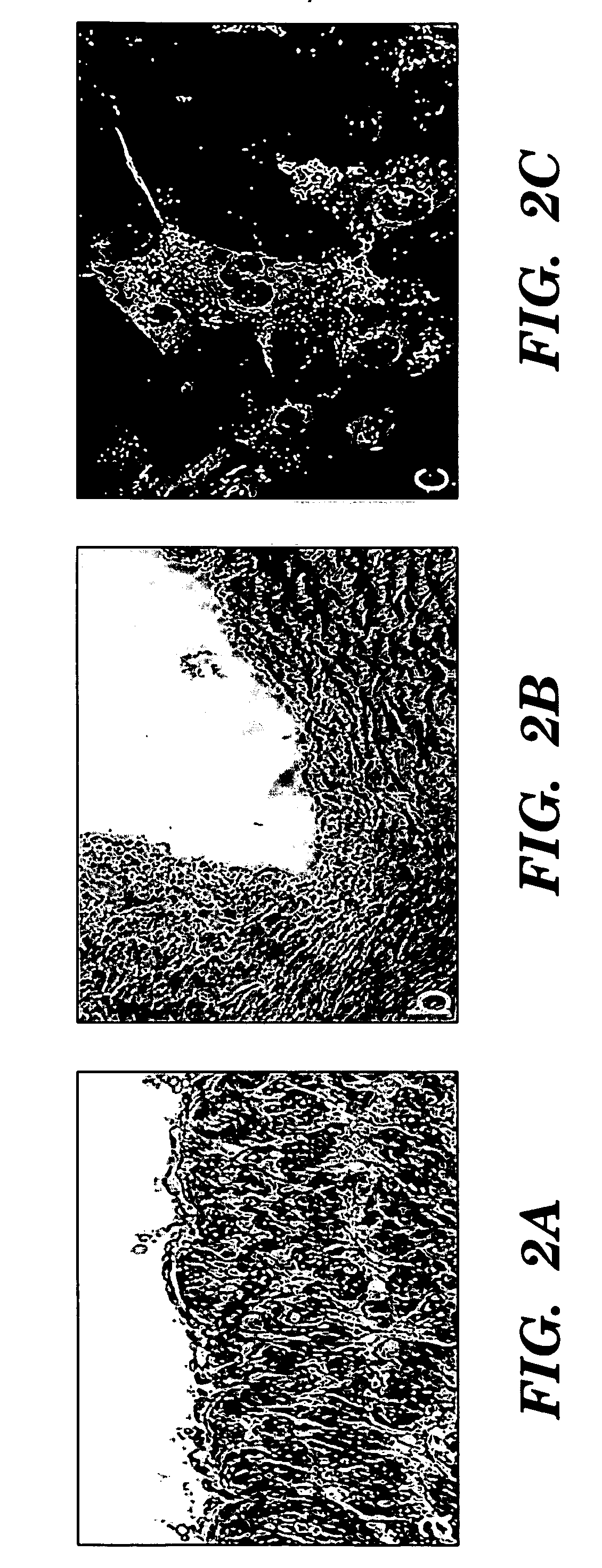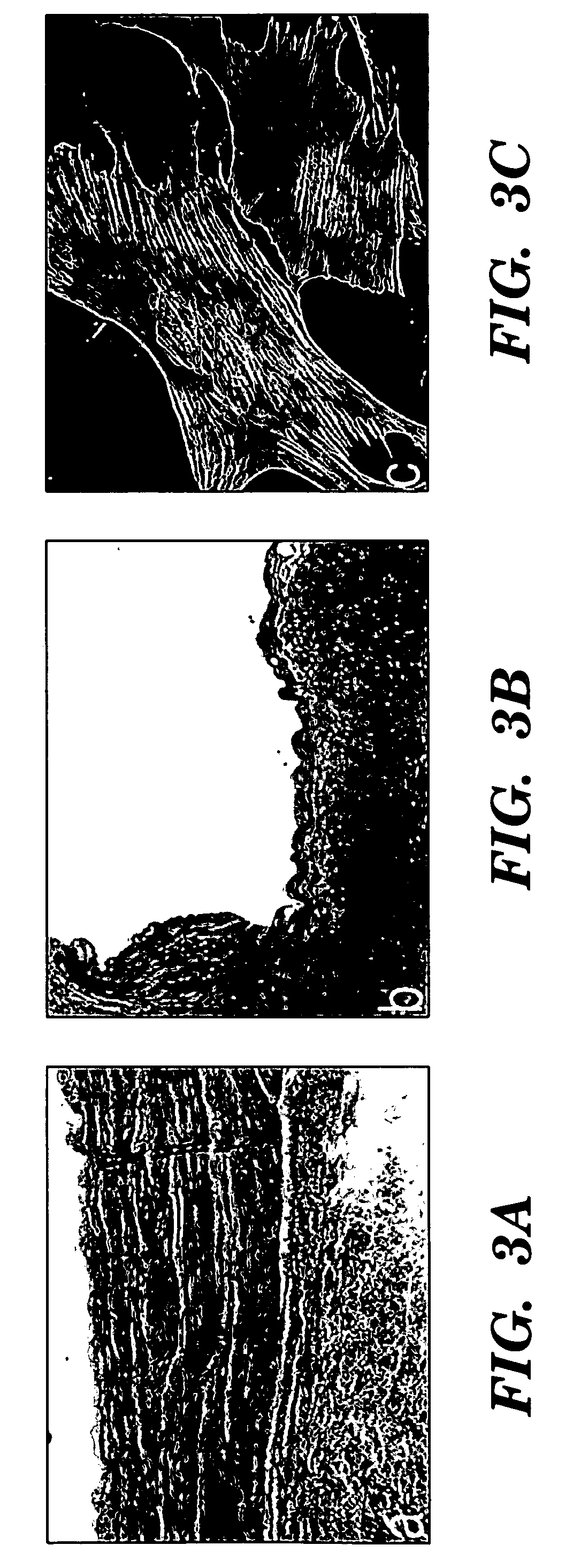Method of isolating cells from umbilical cord
a technology of umbilical cord and isolating cells, which is applied in the field of isolating cells from the umbilical cord, can solve the problem that there are no equivalent techniques in the art, and achieve the effect of reducing the number of stents
- Summary
- Abstract
- Description
- Claims
- Application Information
AI Technical Summary
Problems solved by technology
Method used
Image
Examples
example ii
Characterisation of Cell Cultures
Cells in Culture
[0055] All four cell types could be established and maintained in culture using the aforementioned combination of extraction techniques. Each cell type has its characteristic phenotype and proliferation profile, as well as its particular requirements insofar as culture conditions. In FIG. 1, the typical aspects of the different cell types in monolayer culture are illustrated; in a) endothelial cells, in b) smooth muscle cells, in c) fibroblasts, and in d) a proliferative colony of epithelial cells surrounded by feeder S3T3 cells. All photographs were taken at 10× magnification under phase contrast.
[0056] Problems encountered with the extractions were not directly related to the extraction technique itself, but resulted from a variation of the properties of tissues and cells between different individuals. These problems included blockages in the vein which did not permit perfusion, weak spots in the vein wall which burst under pre...
PUM
 Login to View More
Login to View More Abstract
Description
Claims
Application Information
 Login to View More
Login to View More - R&D
- Intellectual Property
- Life Sciences
- Materials
- Tech Scout
- Unparalleled Data Quality
- Higher Quality Content
- 60% Fewer Hallucinations
Browse by: Latest US Patents, China's latest patents, Technical Efficacy Thesaurus, Application Domain, Technology Topic, Popular Technical Reports.
© 2025 PatSnap. All rights reserved.Legal|Privacy policy|Modern Slavery Act Transparency Statement|Sitemap|About US| Contact US: help@patsnap.com



